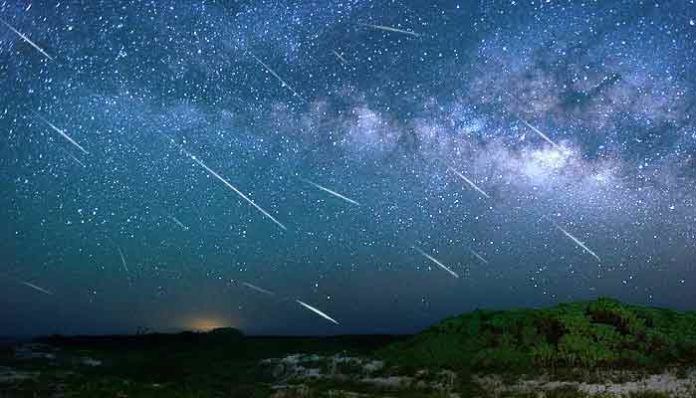Key Highlights:
- You need to look at the southern night sky and you will be able to catch the shooting stars.
- This meteor shower is best visible from the Southern Hemisphere or close to the equator, but you can still catch a glimpse of the meteors in the Northern Hemisphere.
- You can view the meteor, around 3 A.M local time after the most has set.
We are so busy with the daily lives that we sometimes miss what is beyond work. There are such instants in life where we can appreciate the real beauty of nature and what is beyond the earth. This weekend, we are able to witness one of the spring’s busiest meteor showers called the Eta Aquarids.
How can you watch the Aquarids? The answer is simple, you need to look at the southern night sky and you will be able to catch the shooting stars. On 6 May, The Eta Aquarids reached their approximate peak and in the coming days, they will be strong visible, reaching as many as 30 meteors an hour. NASA stated these meteors are known for their speed, reaching some 148,000 mph (just over 238,000 km/h) as they hit our atmosphere.
Best Visible from The Southern Hemisphere
Every 75 to 76 years, a short period comet that swings through the inner solar system shooting stars originates from Halley’s Comet (1P/Halley) and will be visible by in about 2061. The comet leaves behind its own calling card during these visits to the earth. A debris trail of dust grains that earth plows through every May. Before reaching the ground, the bits of debris that hit out atmosphere will burn up harmlessly in the environmental space.
Bill Cooke, who leads NASA’s Meteoroid Environment Office at the agency’s Marshall Space Flight Center in Alabama said, “This meteor shower is best visible from the Southern Hemisphere or close to the equator, but you can still catch a glimpse of the meteors in the Northern Hemisphere.” Furthermore, in a NASA post on 3 May, he stated, “It will be interesting to see if the rates are low this year, or if we will get a spike in numbers before next year’s forecast outburst.”
When is the best time for viewing the Aquarids?
Around 3 a.m. local time after the most has set. According to NASA, move away from as many lights as possible and try to get outside at least 20 minutes before you want to go meteor-hunting, to let your eyes adjust to the dark.




